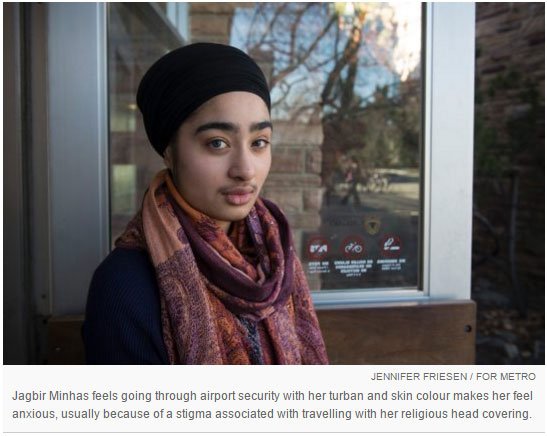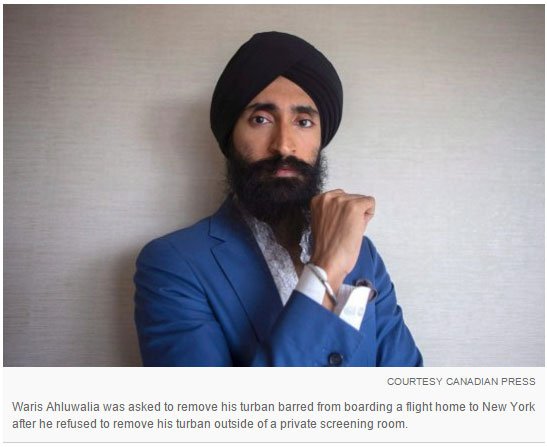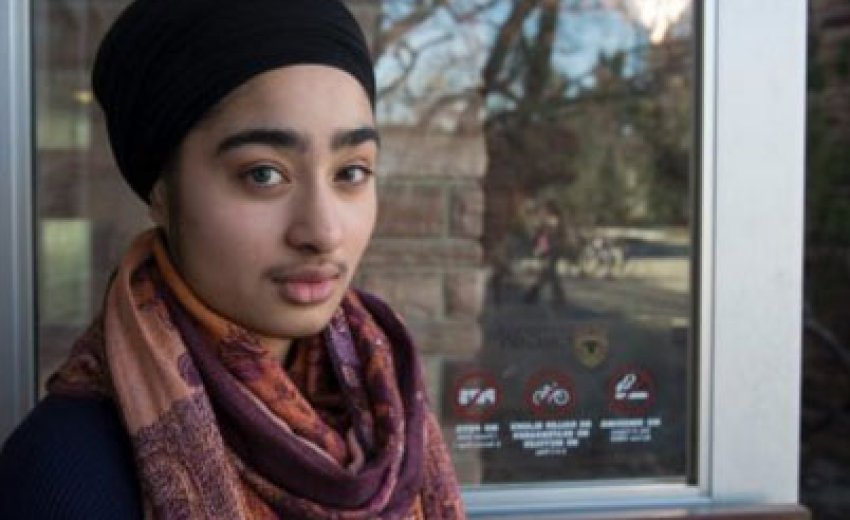Sikh Calgarians detail the little things that many Canadians don't have to worry about

Before Jagbir Minhas heads to the airport, she makes sure she’s wearing something that looks professional, usually lightly coloured. She makes sure her turban is tied properly and that she looks approachable – but more importantly, she doesn’t stick out.
She feels unconsciously nervous – she’ll reflect on the anxiety later, but in the security line, she’s more focused on being careful with her words and appearing well behaved.
For Minhas, her brown skin and the turban on her head means she takes a few extra small considerations when flying that many Canadians don’t have to.
“I feel like, because going to the airport there’s such a stigma, I have to overcompensate,” she said. “If I wear just a t-shirt or don’t dress properly, people are more apt to look at me and see me in a different light.”
Some of her cousins opt to remove their religious clothing, wearing a simpler headscarf over their heads instead of the turban, but not her. Still, she’s aware of the advice other Sikhs have given her – always smile on the plane, always look approachable and always keep your hands visible – whether you’re looking at your phone or reading a book. Be aware of your posture and how you sit in your seat.
Minhas is keenly aware of two recent high profile incidents involving Sikhs at the airport – actor and fashion model Waris Ahluwalia was forced to remove his turban on a New York bound flight, and Ontario comedian Jus Reign was asked to remove his turban during a security screening in San Francisco. Jus Reign was forced to walk through the airport with his head uncovered to reach a bathroom mirror. Sikhs wear turbans to cover their hair, which they are not allowed to be cut and is considered sacred in the religion.

Adev Ahluwalia, a Calgary Sikh who does not keep a beard or turban, tries to make sure he’s always clean-shaven and presentable looking. He said he’s probably gotten more secondary security screening selections that he should and on top of his general anxiety, he has to deal with the many officials not realizing his German wife and bi-racial children are with him.
But Ahluwalia said it feels like there’s a disconnect between this culture of fear within the Sikh and Muslim communities – over social media and in discussions they learn to be careful at airports, but screenings in a private room don’t happen that often. He recently travelled to Vancouver unshaven, in an old sweatshirt and a grouchy mood.
“I was always ready for a fight, like, alright, give me your best shot,” he said. “But nothing happened. I actually felt better.”
He said Canadian airport authorities are likely very fair, but because of stereotypes and high profile stories of racial profiling, many in the community feel anxiety over the screening process.
Security Screening Policy
According to the Canadian Air Transport Security Authority (CATSA), travellers wearing head coverings will be asked to take them off when passing through security. If the head covering is religious, like a turban, and sets of the metal detector, and additional screening will be required.
If a physical search is required, a private search room can be requested.
If the flight is to the U.S., hands must also be presented for explosive trace detection.
“Screening officers are trained to use common sense and courtesy when screening people carrying or wearing objects of religious or cultural significance,” reads to CATSCA website.
Certain religious items, like the ceremonial Sikh dagger, the Kirpan, are not permitted and must be packed in checked baggage.
